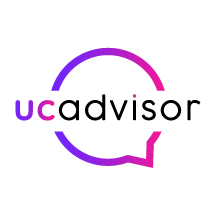
10 Apr The Top 10 IT Challenges for Education in 2024
The IT challenges for education groups can be significant.
The education sector is dynamic, constantly evolving to meet the changing requirements of learners, and society as a whole. As the landscape evolves, educational institutions are increasingly turning to technology to ensure they can innovate, align teams, and deliver exceptional student experiences.
The right technology is essential to ensuring education providers can manage administrative tasks, like enrolment and student lifecycle management. It’s also critical to engaging learners, and ensuring they can achieve their academic goals. According to one study, 77% of educators agree that technology is crucial to keeping students engaged.
Unfortunately, while the rise of new IT solutions in the educational sector introduces a host of new opportunities for growth, it also comes with challenges. Around the world, teams are struggling to take advantage of the latest resources to align, empower, and support teams and students.
Here are just some of the biggest education IT challenges the education sector faces in 2024, and what team leaders can do to begin addressing the issues.
1. Rising Cybersecurity Threats
Perhaps one of the most significant IT challenges for education groups, revolves around security.
According to a study by the UK government, educational institutions were more likely to face cybersecurity breaches in 2023 than any other UK business. Educational institutions are responsible for safeguarding huge volumes of personal data, but they rarely have the IT resources they need to implement comprehensive security and data governance strategies.
Ransomware and phishing attacks are on the rise, and criminals are increasingly discovering new ways to gain access to educational networks. Unfortunately, even small breaches can be catastrophic, with the average cost of a data breach in higher education reaching $3.7 million in 2023.
To stay ahead of security threats, educational institutions need to adopt comprehensive security and data governance frameworks as they embrace new IT solutions. Working with secure vendors in the cloud landscape can help to reduce risks with comprehensive solutions for data storage, security, and management that align with evolving governance regulations.
For many educational institutions, there may also be a growing need to invest in security as a service solutions in the years ahead, for comprehensive risk management, disaster recovery, and end-to-end security analysis.
2. Accessing and Analysing Data
All industries, including the education sector, are becoming more data-driven. Institutions in the educational landscape are increasingly relying on data and information to help them streamline essential processes, such as enrolling new students, communicating with alumni and building powerful, personalised learning experiences.
Drawing data from IT systems effectively can be the key to determining which resources and solutions are most effective at improving faculty performance, or enhancing student outcomes. The right access to data can also help faculty members and leaders to make more intelligent decisions about how to spend their budget on technology advancements.
Unfortunately, many educational institutions struggle to access enough data effectively, and without access to data scientists, they have a hard time converting data into actionable insights. To overcome this issue, educational leaders need to invest in advanced BI (Business Intelligence) tools that streamline monitoring, reporting, and metric tracking.
Using AI to rapidly analyse and assess data can also reduce the need for educational groups to hire data analysts and scientists, with a limited budget.
3. Technology Alignment and Integration
Fragmented and misaligned technology is another of the top IT challenges for education. Gaps between technology can present a number of problems. It makes it harder to maintain a holistic view of crucial data. Plus, it means onboarding new employees is harder, as they need to be trained on how to use a range of different systems independently.
To enhance the outcomes of their IT investments, educational institutions need to invest more heavily in flexible cloud-based systems that integrate numerous tools into a single ecosystem. Unified Communication platforms in the cloud (UCaaS) that work seamlessly with learning management systems, administrative portals, and databases can help streamline and simplify the IT ecosystem.
For some educational institutions, it may even be necessary to leverage the support of “Managed Service Providerrs” (MSPs) who can offer a bespoke approach to systems integration, aligning disparate technology stacks, and reducing the complexity of setup and administration.
These providers can also offer step-by-step guidance through the configuration and development of technology solutions in the educational sector, taking the compliance, security, and performance needs of each individual group into account.
4. IT Skill Shortages
The digital skills gap is widening around the world, particularly as digital transformation continues to bring new technologies into the educational landscape. Over 93% of UK businesses now believe they’re struggling with a serious IT skills gap.
In the educational space, it can be extremely difficult to find specialists capable of handling things like systems integration, cybersecurity management, and even platform development. One potential solution to this issue is the option to work with Managed Service Providers specialising in the educational sector. They can help with various IT tasks, without the need to hire new team members.
Outsourcing education IT challenges to experts on an ad-hoc basis could also be an option for some educational groups. Outsourcing can offer a low-cost, and simpler way to access talent for specific projects, like implementing new AI systems, or communication tools.
Providing teams with access to valuable resources in cloud knowledge systems could be another alternative, ensuring staff throughout your educational facility can access step-by-step support and guidance on everything from analysing data with intuitive tools, to leveraging new software.
5. Evolving Education Options
In the higher education landscape in particular, there’s a growing demand for flexible learning opportunities among students of all ages. By 2030, the global market for eLearning is expected to reach a value of $545.38 billion.
Interest in flexible learning opportunities has increased drastically since the pandemic, as educational groups have discovered the potential to reach a wider range of students through the cloud. However there are IT challenges for education groups to consider if they want to deliver a wider range of options to their students, and boost accessibility.
Not only do companies need to implement and manage learning management systems, but they need solutions that allow them to manage customer service (CCaaS), align distributed faculty members (UCaaS) and experiment with different teaching methods.
To ensure they can support the evolving needs of students in 2024 and beyond, educational institutions will need to work hand-in-hand with cloud service providers who can provide bespoke solutions.
6. Supporting Student Success
The right IT systems in an educational environment can deliver exceptional benefits to both faculty and students. Intuitive technologies empower educators to streamline various processes, from easy enrolment (offline and online), to delivering remote coaching to distance learners.
Some IT solutions can even help give in-person learners access to intuitive tools, such as extended reality headsets and learning software. However, implementing a comprehensive strategy for student success in the digital world requires an investment in complex IT strategies.
Educational institutions need to ensure they have the right networking and connectivity tools available on-site, to facilitate secure access to the internet and cloud-based software. They also need to ensure they have the right resources available to offer technical support to students and faculty accessing these tools, from automated troubleshooting systems to IT help desks.
Implemented correctly, a student success initiative can help educational institutions drive better results for learners, and attract more funding. However, teams need to be willing to innovate and work with IT experts to develop the right strategy.
7. Adapting to Artificial Intelligence
AI has become a crucial trend in virtually every industry in recent years. The rise of artificial intelligence in the educational sector presents phenomenal opportunities. Generative AI solutions can assist with developing and delivering personalised educational experiences, based on the distinct learning preferences and skills of each learner.
AI solutions can assist educators with drawing valuable insights from their data, so they can make better decisions about how to structure courses and modules. Intelligent tools can even assist with recruiting and admissions, student support services, and creating new educational content.
Unfortunately, accessing AI can be one of the top IT challenges for education. Few educational facilities have the resources they need to build their own custom solutions. This is leading to a rising focus on no-code and low-code AI application and platform builders, as well as open-source technologies.
At the same time, educators investing in AI will need to ensure their solutions align with the strict governance and compliance requirements of the educational sector. This means taking extra steps to ensure they’re working with ethical AI vendors, who follow strict security policies.
8. Adapting to Evolving IT Trends
Digital transformation has led to a number of emerging trends in the educational sector in recent years. Alongside the rise of AI, we’re seeing an increase in the number of institutions leveraging new forms of IT, such as automated learning platforms, adaptive learning ecosystems, and even extended reality tools. XR, in particular, appears to hold incredible benefits for education.
PWC found that when it comes to training soft skills, virtual reality has the potential to improve knowledge retention and learner engagement on a significant scale. VR learners complete courses up to 4 time faster than classroom learners, and feel up to 3.75 times more emotionally connected to content. However, implementing these tools comes with new challenges.
For instance, to stream XR content to students using intelligent devices effectively, educators need more advanced connectivity systems, offering access to IoT and edge computing capabilities. To protect educational content, they need solutions for managed backup and data recovery. Overcoming education IT challenges here requires an investment in the right technical support.
9. Rising Costs and Dropping Budgets
The complex economic environment has led to an increase in budget constraints and financial issues for educators in recent years. Around 96% of education providers struggle to find solutions that adapt to their budgets when investing in new technologies. Unfortunately, failure to invest in innovative IT solutions could mean that educators fall behind the competition.
When schools and higher education institutions can’t compete with other leading vendors, their access to funding, and support from alumni can begin to drop. Overcoming education IT challenges like budget constraints can be complicated, but there are solutions that educational providers can tap into.
For instance, UCAdvisor’s Digital Transformation fund offers institutions from all sectors an opportunity to access risk-free funding to assist with IT development. These no-strings-attached funds can ensure educators have the resources they need to leverage new cloud-based tools, IT systems, and managed services, even when budgets are limited.
Reach out to UCAdvisor today to learn more about how our digital transformation funding system works, and how you can apply for support.
Overcoming Education IT Challenges
The top IT challenges for education can be difficult to overcome, particularly without the right support. Educational institutions need to stay on the cutting edge of the technology landscape to effectively support students, drive productivity and efficiency, and reduce costs.
If your educational institution is struggling to overcome the IT challenges mentioned above, UC Advisor can help. Whether you’re using our vendor comparison solution to find the perfect IT partner, or leveraging our digital transformation fund, we’ll help to ensure you can take the next step towards a new era of education.



